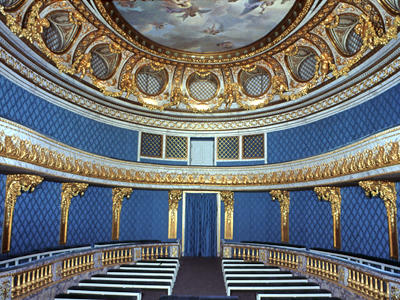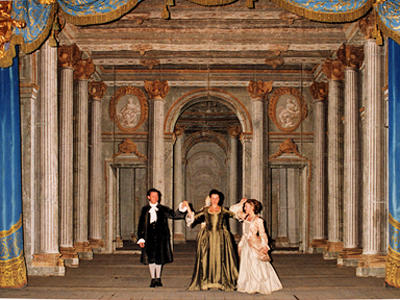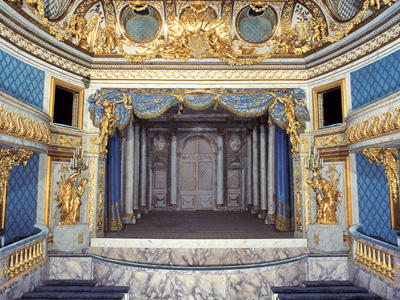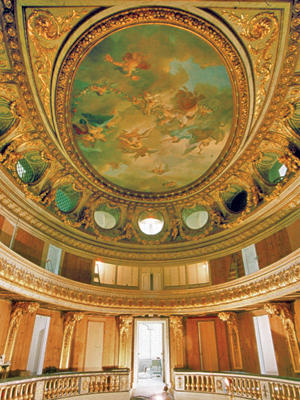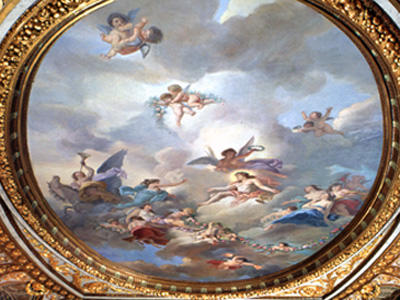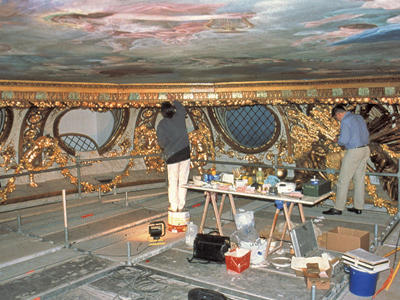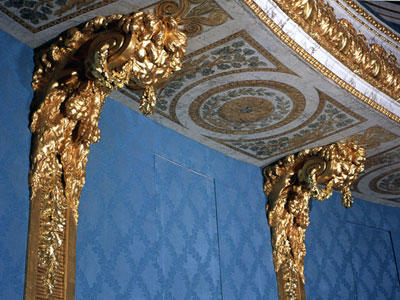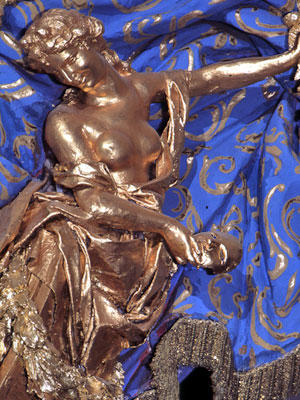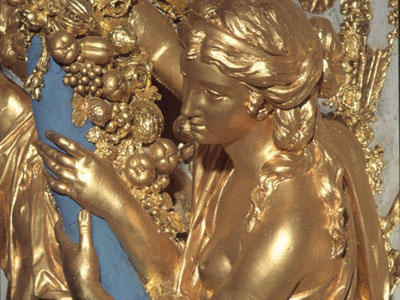Queen’s Theater
Background
The Queen’s Theater at Versailles is widely considered to be one of the most beautiful historic theaters in Europe. Constructed between1778 and 1779 to the designs of architect Richard Mique at the request of Marie-Antoinette, the diminutive theater is part of the Petit Trianon Estate, which was built between 1762 and 1768 for Louis XV and Madame de Pompadour. When he came to power, Louis XVI gave the estate to Marie-Antoinette and it soon became the queen’s favorite residence. Marie-Antoinette was very fond of music, opera, and the theater and, in addition to the many command performances held in her private theater, she often participated in the plays herself.
How We Helped
Thanks to French laws supporting museums, the theater received some restoration work in the early 1980s. Due to severe problems of structural instability, however, the theater still could not safely support public visitations, much less performances. In 1997, WMF began a more comprehensive restoration project guided by archival documents detailing the construction of the theater and the composition of its original finishes. The conservation team succeeded in stabilizing structural elements and properly restoring the theater’s interior, including replicating the original color scheme, and the original fabric used in the theater. Work was completed in the fall of 2001 and once again allows the theater to be used for special events.
Why It Matters
During the seventeenth and eighteenth centuries, private theaters were a common feature in palaces and chateaux. This particular theater, through its past uses and metamorphoses, can be seen as an outline for French history itself. From the eighteenth-century private whimsical usage of Queen Marie-Antoinette, to its influence on Napoleon’s empire design, up to the last king, Louis-Philippe, who opened it to the public, the Queen’s Theater wonderfully reflects the changing patterns of French political life.

